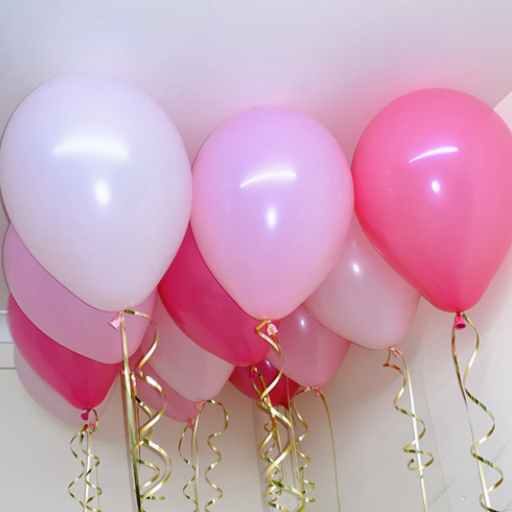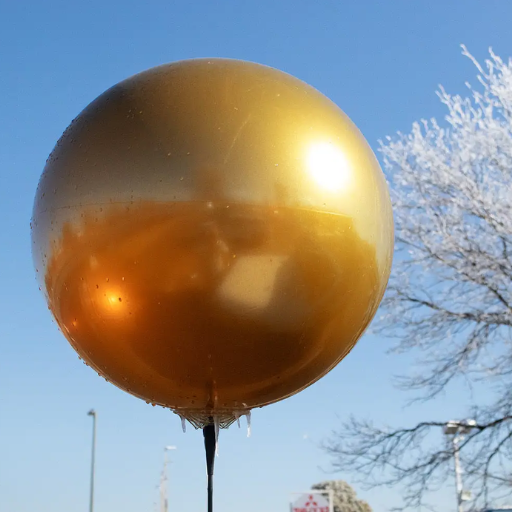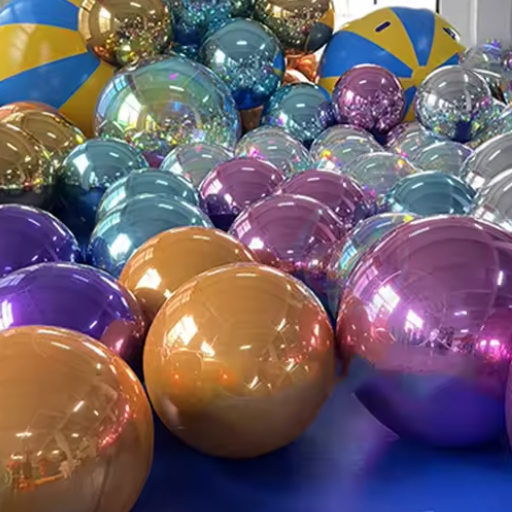Balloons are unquestionably the priceless décor elements that lend every occasion a luxurious and party spirit. Unfortunately, there is a very pertinent query that keeps pestering them – how long do balloons stay inflated with normal air? The secret of this knowledge is the timeframe that the balloons filled with air will look perfect and appropriate for the party. This includes how long they stay ideal for, and up to what point they can be used. This revelation will be explored in this article. The reason for writing this article is to educate you on the duration of helium gas in balloons by using several illustrations. Additionally, by reading this article, you will understand the factors that determine whether balloons last longer or burst sooner, as well as why this happens and when and where it occurs. Such issues cover anything from specific materials to changes in weather conditions and will be discussed in detail and provide guidance for organizing a fantastic party.
Understanding Balloon Inflation

Deflated balloons that have been re-inflated with normal air usually last anywhere between a few days to weeks, depending on the material and the surrounding conditions. For instance, latex offers a 5- to 7-day shelf life when over-inflated with air within the system. Otherwise, foil or mylar balloons can last for months, and Ryo may even retain most of the shape beyond a month. Their lifespan also depends on whether the balloons are heated, humid, or come into contact with sharp objects, which increases the chances of ‘popping’ and therefore deflating them more quickly. Thus, to achieve the best outcomes, it is best to keep such air-filled balloons in one’s interior as much as possible and avoid storing them in direct sunlight or under high temperatures.
What Affects How Long Balloons Stay Inflated?
One of the most important factors determining how long the inflated balloons stay is how long balloons stay inflated with normal air.
Type of Inflation:
In the case of latex balls, typically made of clay, they are porous, which means over time, air or helium contained in the balloon leaks out. Helium-filled latex balls usually remain in place for 12 to 24 hours, while some air-filled latex balls may stay in place for 5 to 7 days. On the contrary, foil (mylar) balloons have an aluminum coating on their surface, which makes them less porous. The balloons of this type can remain filled with helium gas for up to 5 days and air for weeks or even months, subject to the environment.
Gas Include
Helium is a very light gas; however, its molecules are tiny, and hence it loses pressure the fastest in comparison to other gases. Therefore, if you want to keep them for long, don’t use latex balloons. Some companies offer a sealant that can be purchased in the market to spray into the latex before it is inflated with helium. On the other hand, since the molecules of air are much bigger relative to those of helium, the rate of air exit from a pneumatic balloon is relatively low, and hence a balloon filled with air lasts longer than one with helium.
Weather Conditions
Heat causes balloons to swell more than usual, which leads to the balloon bursting due to the excess pressure exerted by air molecules. Heat and sunlight also accelerate the process of latex decomposition, thereby limiting the period during which a balloon remains intact. On the other hand, when the weather is cold, helium gas contracts, causing the balloon to look deflated until it is taken to a warm place.
Quality of the Balloon
Balloons made from thicker or higher-quality materials last longer than those made from thinner, cheaper materials. Durable balloons are worth the investment, especially in cases where they need to be adorned or used for any events.
Storage & Handling
Storage of balloons is one of the fundamental aspects that ensures that their lifespan is increased. Balloons that are stored away from sharp objects, high temperatures, and UV rays outlast balloons that are simply thrown anywhere. More so, it is more likely to toss or jab balloons if they are handled carelessly.
Additional Coatings or Treatments
The application of balloon maintenance compounds, such as Hi-Float, inside latex balloons works wonders to keep balloons afloat longer, expanding the floatation period by nearly 10 times. This is an advantage when helium-charged latex balloons have a longer floating time factor over their usage, such as in weddings or parties.
Take some recent figures as an example: helium-charged latex balloons typically last for almost 12 to 18 hours without using Hi-Float. However, with the use of Hi-Float, the period of keeping such balloons afloat is enhanced from 12 to 18 hours to about 3 to 5 days. Furthermore, foil or Mylar balloons typically last a week under helium, but when kept indoors, they may last for more than 30 days, retaining their shape. Knowing these factors allows making maximum use of the balloons without fear of them bursting or withering prematurely.
Comparison of Helium and Air-Filled Balloons
| Parameter | Helium-Filled Balloons | Air-Filled Balloons |
|---|---|---|
| Floating Ability | Floats due to lighter helium gas | Does not float, requires support |
| Lifespan | Shorter (8-24 hours for latex, days for foil) | Longer (days to weeks) |
| Cost | More expensive due to helium gas | Cheaper, uses free air |
| Environmental Impact | Limited helium, potential littering | Eco-friendly, uses renewable air |
| Best Uses | Floating decor, bouquets, ceiling displays | Arches, garlands, and stationary structures |
| Refillable | Foil balloons can be refilled | Not refillable |
| Durability | Less durable, helium escapes easily | More durable, air stays longer |
| Creative Potential | Ideal for floating designs | Suitable for intricate structures |
| Material Suitability | Works with larger, lighter materials | Ideal for all sizes and types |
Types of Balloons: Latex vs Mylar
| Parameter | Latex Balloons | Mylar Balloons |
|---|---|---|
| Material | Natural latex from rubber trees | Metallic polyester film (synthetic) |
| Biodegradability | Biodegradable | Non-biodegradable |
| Appearance | Matte or semi-gloss finish | Shiny, reflective surface |
| Customization | Easy to customize with logos or text | Ideal for detailed designs and prints |
| Lifespan (Helium) | 12-24 hours (latex) | Weeks to months |
| Refillable | Not refillable | Refillable multiple times |
| Cost | Affordable | More expensive |
| Best Uses | Casual events, eco-friendly options | Formal events, long-lasting decor |
| Environmental Impact | Lower impact with proper disposal | Higher impact requires careful disposal |
| Durability | Porous, helium escapes faster | Airtight, retains helium longer |
Factors Impacting Balloon Longevity

There are several determinants of how long balloons stay inflated with normal air:
- Materials Used – Rubber balloons tend to oxidise and crack faster compared to Mylar balloons. This is especially true in cases where they are exposed to the sun or a lot of heat. Mylar balloons last longer as they are hard to tear.
- The Quality of the Seal – Helium stays inside balloons with a good seal longer, and so does air. However, if the seal is not well done, they deflate at a much faster rate.
- Factors of the Environment – Like heat, light, and contact with sharp objects. Those make balloons deflate or puncture faster. Such things are more common during the day or outdoors. The effect, however, is entirely different in cool and enclosed times or areas where the endurable time is longer.
- Inflation Mean – Balloons that are filled with helium tend to lose gas faster as compared to those that are filled with air because the helium molecules are smaller and escape through the balloon walls relatively easily.
Understanding these considerations will help reduce the rate at which the balloons expire and prevent them from being damaged.
Environmental Factors That Affect Inflation
Temperature
Sudden shifts in temperature increase or reduce the level of inflation. These gaseous idioms, when exposed to high temperatures, expand to the point of self-destruction, while at low temperatures, they shrink and compress. For best inflation, it is advisable to store balloons within a temperature range of 68°F to 77°F.
Humidity
If the environment has a humidity level above 75%, it can damage the balloons, causing them to deflate or burst more easily. On the other hand, very low moisture would cause the balloons to dry, and they would become too hard with time. A low humidity level’s attending advantage is that the balloons will remain fine under the circumstances.
Exposure to Sunlight
Balloons should not be left in direct sunlight, as their exposure to UV rays accelerates the degradation process, destroying the latex or other materials. When left under the sun for long periods of time, the balloons may begin to fade, discolor, or even deflate more quickly than usual. It is preferable to keep the balloons in the shade or enclosed spaces.
Air Pressure
Balloons are likewise affected when there is a change in altitude or air pressure. For instance, when one goes to higher altitude regions, where air pressure is relatively low, balloons may expand excessively and ultimately burst, while lower altitudes will lessen the extent of inflation. It is the uniformity of air pressure that allows them to maintain their shape.
Wind Conditions
It damages the balloon more in a windy atmosphere, as it causes the balloon to come into contact with rough or pointed surfaces. There is premature bursting as a result of such friction and other wind forces, which may also enable the balloon to break on contact. The need to tether balloons in their inflated positions or suitable places is essential, as it lowers the risk of damage.
Temperature changes affect the expansion of air inside the balloons, but how much or how long balloons stay inflated with normal air does not depend solely on temperature.
Quality of Balloons and Their Material
The caliber of balloons is considered in terms of how long they last and how they perform in use. Balloons of superior grade are constructed to better cope with stresses such as fluctuations in air pressure and temperature, as well as physical contact, compared to their poor quality counterparts. The following is a list of primary determinants of the quality of balloons and the materials used in their manufacture.
- Material Type – Balloons made from natural latex or synthetic polymers tend to demonstrate greater flexibility and endurance. They also contain a high content of natural gum, which is biodegradable; thus, most high-quality latex balloons are eco-friendly.
- Structure – The structure of the walls of the balloon s is a determinant factor in their strength. Thick balloons have a higher threshold before popping, hence less burst risk.
- Design Process – These factors utilize modern technology, such as accurate molding and/or control methods/ mechanisms. They include factors that allow the balloons to be used in a specific size. Also, these control aspects help ensure that the manufactured balloon retains its elasticity.
- Coating and Treatments – Certain high-end balloons feature protective coatings designed to improve the tolerance of materials to UV rays, thereby reducing the risk of degradation when exposed to sunlight.
- Elasticity – The elasticity, or how far the balloon can stretch before rupturing, is another important property. Elasticity, or the extent to which the balloon can stretch before rupturing, is another important property.
The quality and durability of balloons determine how long they stay inflated with normal air and how taxing this style of use is.
Temperature and Humidity Effects
However, it is also essential to consider the environment’s temperature and humidity when examining how long balloons stay inflated with normal air. Specific environments, in particular those with very high or very low temperatures, can effectively affect the characteristics of its materials and in the long run, the balloon’s lifespan. For example, when the climatic conditions mimic those of higher temperatures, the material can stretch way beyond its elastic limit and fail. Research shows that latex balloons lose their resilience and begin to wither very quickly when subjected to conditions above 30 °C. This is because high temperatures accelerate the decomposition of the material and the evaporation of the protective factor.
At the other end of the scale, the absence of warmth increases the chances of balloons losing their elasticity and breaking or even failing to remain inflated. A classic example is around the freezing point (10 degrees Celsius) whereby losing flexibility will cause the balloon made with latex to be frozen or shrink visibly.
The variations in humid climates will affect a balloon’s longevity. Balloons gathered and placed in moist environments, for instance, may cause the material in the balloon to absorb moisture, resulting in expansion and softening of the material. Meanwhile, drought conditions can significantly reduce the lifespan of latex rubber balloons, as they become brittle and prone to breaking. Detailed investigations indicate that a sweet spot may exist where levels of 40-60% humidity will improve performance by ensuring the kin is not unnecessarily dried nor soaked.
There is an imperative need to understand the effects of different temperatures and humidity on the performance of balloons, whether for practical purposes or for entertainment. Modifications in storage, handling, and inflation strategies will minimize the adverse effects and maintain the quality of the balloon in different environmental conditions.
Tips to Make Balloons Last Longer

Refrigerate Balloons In A Humidity-free Environment
Balloons are adversely affected by high temperatures or high humidity and lose air quickly, often bursting in a short time. Storing balloons in temperatures between 55°F and 75°F is highly recommended, as they can withstand such temperatures easily.
Purchase The Best Available Balloons
Try to purchase superior balloons that are made from sturdy latex or foil, as they tend to last longer than any other type of balloons. However, if cheaper alternatives are used, they might not last as long, especially when exposed to unfavorable conditions.
Inflate the balloon thoroughly and avoid overfilling it.
When filling up a balloon too much, there is more pressure inside, and therefore it can burst. The Pressure Within The Balloon can be measured by the gauge of a pump or a pump with a gauge in it, and the recommended load already stressed.
Use The Balloon Fillers For The Burling Balloons
To overcome helium or air leakage, a latex balloon can be treated with a sealant that fills the pores of the material, thereby sealing it. Tests have shown that latex balloons, which undergo a specific treatment, tend to last 25% to 50% longer than their untreated counterparts.
Never Keep Balloons Near Sharp Things and the Sun
Balloons can be easily pricked by sharp edges or rough surfaces, and they burst in extreme sunlight after some time. In case there is no shade and the balloons are to be used outside, remember to arrange for screens or similar protection to prevent UV rays from reaching the balloons and weakening their structure.
Proper Inflation Techniques
Balloons are lovely, but how long do balloons stay inflated with normal air? Or who doesn’t want to float a balloon in their room is like sacrificing comfort. This is because balloons have been a favorite of kids and adults alike since childhood. Therefore, with their great aesthetics and short shelf life, the balloons must be perfectly inflated to preserve their shape for a longer period. The following six methods and materials have been described for this purpose:
Making Use of Pumps or Helium Cylinders
Hand pumps of every type, i.e., both manual and electric ones, or the ones that control removing air out of the balloon perfectly, preventing it from overfilling, which results in a weak latex or foil balloon. Helium cylinders are also used, which operate at a certain pressure that makes the balloons lighter and fills them with helium gas in a well-ordered manner.
Do Not Overinflate
The balloon will burst if it is overinflated. Particularly when it’s hot or the pressure is too high. Begin blowing until the balloon is fully inflated – as most balloons state, the maximum size the balloon can be blown to is its limit, and it is strong enough to withstand this size. Do not continue.
Blow Immediately to the Right Size
Always make and recommend that other persons study the sizer or measure the fitting diameter of the balloon. For instance, a latex balloon of 12 inches in diameter, when fully blown, should also measure exactly 12 inches at most, so as to avoid forcing the material.
Exert Pressure On Balloons Before Blowing
Slightly pressurizing latex balloons by firmly stretching them on all sides makes the balloons much more elastic and less prone to rupture. This simple action allows the balloon to stretch; therefore, it will last significantly longer compared to before.
Secure Ponytails Up High
The ends of the balloons should be knotted carefully, such that no air or helium is lost, especially if sold with measurement charts or templates. This is very useful for balloons filled with helium, as double-knot or clipped balloons are less likely to deflate.
Using Treatments for Extended Longevity
There are specific preparations to tackle the health of balloons, especially on those that are filled with helium. One of the most sought-after fluid coats applied inside a balloon is Hi-Float. This solution creates a thin-film analogue, therefore reducing the rate of helium leakage from the balloon. Thus, according to the manufacturer’s description, if the balloons are treated, they can remain afloat even 25 times longer. For instance, a latex helium balloon floats for between 12-24 hours with no Hi-Float treatment; with Hi-Float treatment, the balloon can take between 2-3 days or even more, depending mainly on the surroundings.
To achieve optimum results, it is advisable to store balloons in cool, dry places or within protective devices, such as tins or containers, which extends their durability. However, their applications will have to be curbed due to severe accidents in such CE-marked buildings, as many are prone to penetration by sharp objects, as well as strong direct sunlight, which slowly nibbles away at the latex. Proper inflation measures, combined with treatments, are used to preserve the internal structure as well as the outer structural design of the constructed balloon decoration, which helps ensure that balloons will not deflate, making them useful in extended-period events.
Storage Conditions Before Use
To preserve the air-filled balloons for the longest time, it is best to place them in a dark, dimly lit room with no windows, avoiding direct sunlight, hot and cold weather conditions, as well as any obtrusive shapes, before using them for any purpose.
Practical Advice for Events and Celebrations

Arranging events for yourself and your loved ones can be both fun and exciting as well as a source of stress and anxiety. To avoid such situations, it is best to first come up with a plan and a list of tasks that need to be done, such as booking a venue, inviting guests, and organizing the space. It is also essential to allow yourself enough time to do each task as this will eliminate any blockages that may arise due to a lack of performance. Since balloon decoration is always the main attraction at every occasion, they should always be inflated on the day of the function to ensure they remain fresh-looking. Additionally, a helium tank or air pump should be used to save time. Arrange decorations in advance, don’t forget to prepare extra materials in case some need to be replaced. Efficient organization and preparation are essential in creating an enjoyable and relaxed event.
Choosing Between Helium and Normal Air
When deciding whether to fill balloons with helium or just the usual air, specific details come into play. Each has its pros and cons, as will be evident when meeting specific requirements. Here is a comparison of the two:
Float Time
- Helium: When helium-filled balloons are used, they tend to float and create lightweight images, which makes homes, especially those with exterior decorations, look much better. The downside is that such balloons have a short floating lifespan, as typical latex balloons can only last 8 to 12 hours unless protected by a special compound sealing.
- Normal Air: It is not possible to increase the air content in balloons so that they can fly; however, they can remain on the ground filled for months, or even one week, which works best for negative-shaped decorations.
Cost
- Helium: Using helium is quite costly compared to using normal air, particularly when it comes to valved balloons, because the helium gas is expensive and an inflation device is also required.
- Normal Air: It costs nothing to use normal air, since any air pump or some level of strength is the only inflation necessity.
Ease of Use
- Helium: Using helium tanks requires caution, as improper handling can lead to gas wastage.
- Standard Air: Since no extra care is needed and, more importantly, the usage of normal air does not expose one to any safety issues, it is more appropriate for non-experts.
Impact on the Environment
- Helium: Balloon manufacture and, consequently, its use, have the potential to affect the environment because the origin of the gas – helium – is finite, leading to overuse and serious concerns.
- Standard Air: Normal air is cost-effective and removes the necessity for gases such as helium; therefore, it can be said that this option is less detrimental to the environment.
Effect of Appeal
- Helium: Using helium-filled balloons brings the image of floating balloons, which is very appealing, especially for decorations at formal functions.
- Normal Air: However, in the case of balloons filled with normal air, they do not float but can be stuck with tapes, hung on strings, or stands to create the same pleasing effect.
Taking into account these aspects, you can choose the option that best suits your event within your budget constraints. These are integral to making your celebration as decorative as possible.
Best Practices for Balloon Decoration
Crafting beautiful decorations using balloons demands a mixture of skill, imagination, and proper arrangement. A list of basic techniques that one should follow in this craft can be found, along with relevant materials and information about current trends.
1. Pick a Suitable Color Scheme
It’s beneficial to match the color scheme to the event. For instance, pastel shades are best suited for baby showers, while loud and bright shades are more suitable for a birthday party.
Current data indicate that the use of neutral and natural colors, such as beige, sage green, and terracotta, is on the rise, especially in 2023, for elegant weddings and other celebrations.
2. Get Good Quality Balloons
Always use firm and good-quality balloons so that they do not burst easily and keep their shape intact. People prefer latex balloons as the primary material because they are eco-friendly, being readily biodegradable.
Market research data predicts that 8 out of 10 event managers opt for the best-quality balloons available in the market for larger structures, as it is imperative that such structures last and look good.
3. Add Dimension by Layering Balloons
Combining balloons of different sizes can add a professional touch to your arrangement. Use multi-sized clusters, such as large focal balloons surrounded by smaller ones, to create depth.
Pro Tip: Incorporating oversized balloons (24 inches or larger) makes a bold statement and can serve as a centerpiece for your installation.
4. Secure Your Installations
Use appropriate support mechanisms, such as balloon stands, tapes, or arch frames. For outdoor events, weighted stands or tying balloons to sturdy anchors ensure stability in windy conditions.
Recent studies recommend using reusable balloon stands instead of single-use materials to reduce costs and environmental impact.
5. Experiment with Shapes and Textures
Add visual interest by mixing metallic, matte, or transparent balloons. Foil balloons with unique shapes, such as stars or hearts, are great for themed parties.
According to some statistics, in 2023, the number of inflatable merchandise sales involving the purchase of balloons filled with the transfer of the appearance of chrome grew. This is a sign of greater usage of these items for more sophisticated decoration settings.
6. Setting The Scene With Light
Try inserting LED light ropes inside see-through balloons or even glow sticks to create some magic, especially at night. In weddings and outdoor events, this practice has reached a level of popularity that is now necessary.
Researchers have reported that balloon decorations with lighting significantly enhance the user’s experience, as indicated by 40% of the feedback received from holding events.
7. Factor In Sustainability
Please try to be efficient with the resources, as overexertion becomes a concern on many issues. Better buy party helium with biodegradable balloons, and most importantly, dispose of the materials responsibly.
Did you notice? Most of the decor structure and design avoid conventional products, which are less environmentally friendly, and for a percentage as low as 40%, do not offer sustainable alternatives.
8. Recommended Inflation Methods
Be cautious when filling balloons to their maximum capacity, as doing so may cause them to pop. Similarly, if they are not adequately inflated, they may not hold their shape, resulting in a saggy-looking arrangement. The most effective approach is to follow the brand’s guidance.
For more aesthetically pleasing helium-inflated balloons, inflate them just a few hours before the display, as the maximum floating duration for latex balloons is typically 8 to 12 hours.
With the incorporation of these methodologies, you will be in a position to ensure that your balloon decorations meet the needs and align with contemporary trends and ethics, while still leaving a nice touch on your visitors.
Frequently Asked Questions about Balloons
| Question | Answer |
|---|---|
| How long do latex balloons float? | 12-24 hours with helium, longer with Hi-Float |
| How long do foil balloons float? | 5-7 days, sometimes weeks |
| Can balloons be displayed outdoors? | Yes, but heat and sunlight reduce lifespan |
| Are latex balloons biodegradable? | Yes, they degrade like oak leaves. |
| Are foil balloons biodegradable? | No, but they are recyclable. |
| Can I get custom-printed balloons? | Yes, available for both latex and foil balloons |
| Do 5″ latex balloons float? | No, they are for air use only |
| What is Hi-Float? | A sealant to extend the latex balloon float time |
| Why is helium expensive? | Due to global helium shortages |
| What payment methods are accepted? | Credit cards, Zelle, Venmo, CashApp, cash, or check |
References
“Ballooning across the curriculum” – This academic work discusses various aspects of balloon usage and air pressure. Available at Huskie Commons.
“Strengthening Balloon Programs: University and Business Collaborations, Research, Outreach, and Internal Support” – This document explores balloon programs and their applications, including atmospheric data collection. Available at Academia.edu.
“Applications to the Physical Sciences” – This paper includes discussions on air pressure and its effects, which can be related to balloon inflation. Available at CiteSeerX.
Frequently Asked Questions (FAQ)
How long do balloons stay inflated with normal air durée dans son utilisation?
Balloons staying inflated with normal air have a simple limitation, which is only around 1 to 2 days. However, in some cases, users can extend the lifespan of the balloons slightly for many reasons, such as the type of pressure and other conditions of the sphere.
How durable are latex balloons when air is the main filling?
If air is to be used, latex balloons will remain firm for many days. The shrinkage occurs, but for a limited period, they will be afloat, depending on the measure and the quality of the latex.
What duration do helium-filled balloons provide buoyancy?
Traditional helium balloons are lightweight and will stay above the ground for up to 8 hours, if there is a large enough pressure differential between the capsule and the outside air. This period can be prolonged if the content is treated with products such as Hi-Floating to ensure the helium is trapped inside the balloon.
Compared to latex balloons filled with helium, do air-filled latex balloons last longer?
Air-filled latex balloons distinguish the time it takes for a leak to occur from that of helium-filled ones. Helium in a latex balloon may cause it to float for a few hours, but once filled with air, it will take days, even weeks, before deflating, thus maintaining its floatation.
How do environmental factors affect how long an inflated balloon remains in its current state?
Temporal factors such as temperature, moisture content in air, and light exposure would highly influence the functioning of the inflation of a balloon. Elevated temperatures lead to rapid losses of air as an internal bubble expands due to the temperature increase.
In what period do air-filled mylar balloons hold their air?
When FDPs are filled with air, they can last for many days, depending on the balloon itself and external conditions. Because the balloons are not as porous as those made from latex, air is also retained for a longer time.
In what ways do both helium and air change the time a balloon remains afloat?
Helium-filled balloons generally lose their capacity to float sooner than balloons inflated with air. It facilitates the flotation of the balloon, but the gas is also more susceptible to leaking out than air, which keeps the balloons inflated for more extended periods, but does not allow them to float.
How long do balloons stay inflated with normal air for latex?
In the case of air-inflated latex balloons, they can stay around for many hours, if not days. However, it all depends on the size of the balloon and the amount of air filled into it, which in turn is also determined by the quality of the latex and the environmental conditions.
Why do my balloons seem to drop sooner than normal?
There are several reasons why balloons may suddenly lose the air they contain. This could be because they were insufficiently inflated or exposed to sharp objects, extreme temperatures, or direct sunlight. Additionally, the quality of the materials used can affect how long it takes for them to deflate once inflated.









